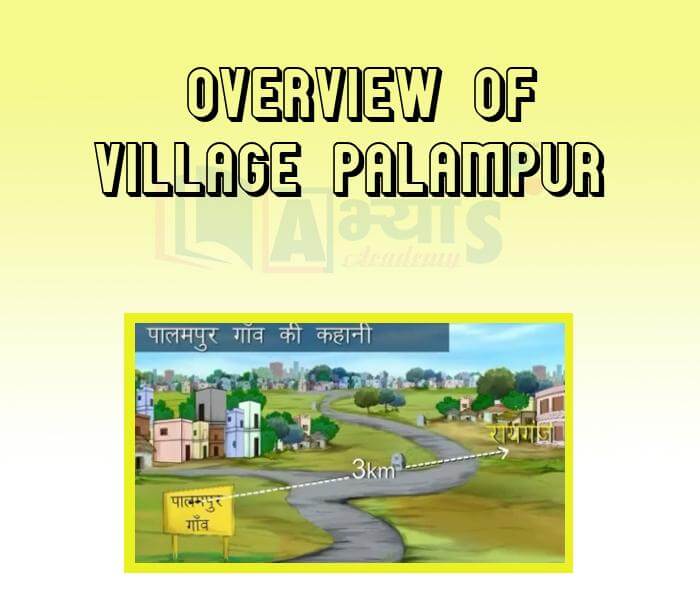Overview of Village Palampur













Overview of Village Palampur
The story of village Palampur is narrative based on a research study by Gilbert Etienna of a village in Bulandshahr district in Western Uttar Pradesh. The purpose of the story is to introduce some basic concepts relating to production.
Overview: Farming is the main production activity in a hypothetical village named Palampur. Other production activities like dairy farming, manufacturing, transportation and shopkeeping are practised on a limited scale. These production activities need various types of resources like natural resources, man-made items, human effort, money, etc.
Palampur is having an all weather road connecting it to a bigger village Raiganj and the nearest small town called Shahpur. All kinds of vehicles move on this road.
Out of the 450 families living in Palampur, about 80 upper caste families own the majority of land and have large and well-constructed permanent houses. The SCs (dalits) in the village comprise about one-third of the population and are landless labourers. They live in one corner of the village in smaller houses, some of which are poorly constructed with mud and straw.
Almost houses in Palampur have electric connections. Electricity powers all the tubewells used for irrigating crops, besides providing power for running small-scale manufacturing and other business activities in Palampur. It has two primary schools and one high school. It also has a government primary health centre and a private dispensary.
The description above shows that Palampur has fairly well-developed systems of roads, transport, electricity, irrigation, schools and health facilities. Similarly, all the Indian villages have farming as their main production activity and similar non-farm activities.
Production activity: The creation of value or wealth by producing goods and services.
Resources Commodities or services used to produce goods and services.
Students / Parents Reviews [10]
It has a great methodology. Students here can get analysis to their test quickly.We can learn easily through PPTs and the testing methods are good. We know that where we have to practice

Barkha Arora
10thI have spent a wonderful time in Abhyas academy. It has made my reasoning more apt, English more stronger and Maths an interesting subject for me. It has given me a habbit of self studying

Yatharthi Sharma
10thMy experience with Abhyas academy is very good. I did not think that my every subject coming here will be so strong. The main thing is that the online tests had made me learn here more things.

Hiya Gupta
8thAbout Abhyas metholodology the teachers are very nice and hardworking toward students.The Centre Head Mrs Anu Sethi is also a brilliant teacher.Abhyas has taught me how to overcome problems and has always taken my doubts and suppoeted me.

Shreya Shrivastava
8thA marvelous experience with Abhyas. I am glad to share that my ward has achieved more than enough at the Ambala ABHYAS centre. Years have passed on and more and more he has gained. May the centre flourish and develop day by day by the grace of God.

Archit Segal
7thOne of the best institutes to develope a child interest in studies.Provides SST and English knowledge also unlike other institutes. Teachers are co operative and friendly online tests andPPT develope practical knowledge also.

Aman Kumar Shrivastava
10thAbhyas Methodology is very good. It is based on according to student and each child manages accordingly to its properly. Methodology has improved the abilities of students to shine them in future.

Manish Kumar
10thMy experience was very good with Abhyas academy. I am studying here from 6th class and I am satisfied by its results in my life. I improved a lot here ahead of school syllabus.

Ayan Ghosh
8thIt was good as the experience because as we had come here we had been improved in a such envirnment created here.Extra is taught which is beneficial for future.

Eshan Arora
8thMy experience with Abhyas is very good. I have learnt many things here like vedic maths and reasoning also. Teachers here first take our doubts and then there are assignments to verify our weak points.
